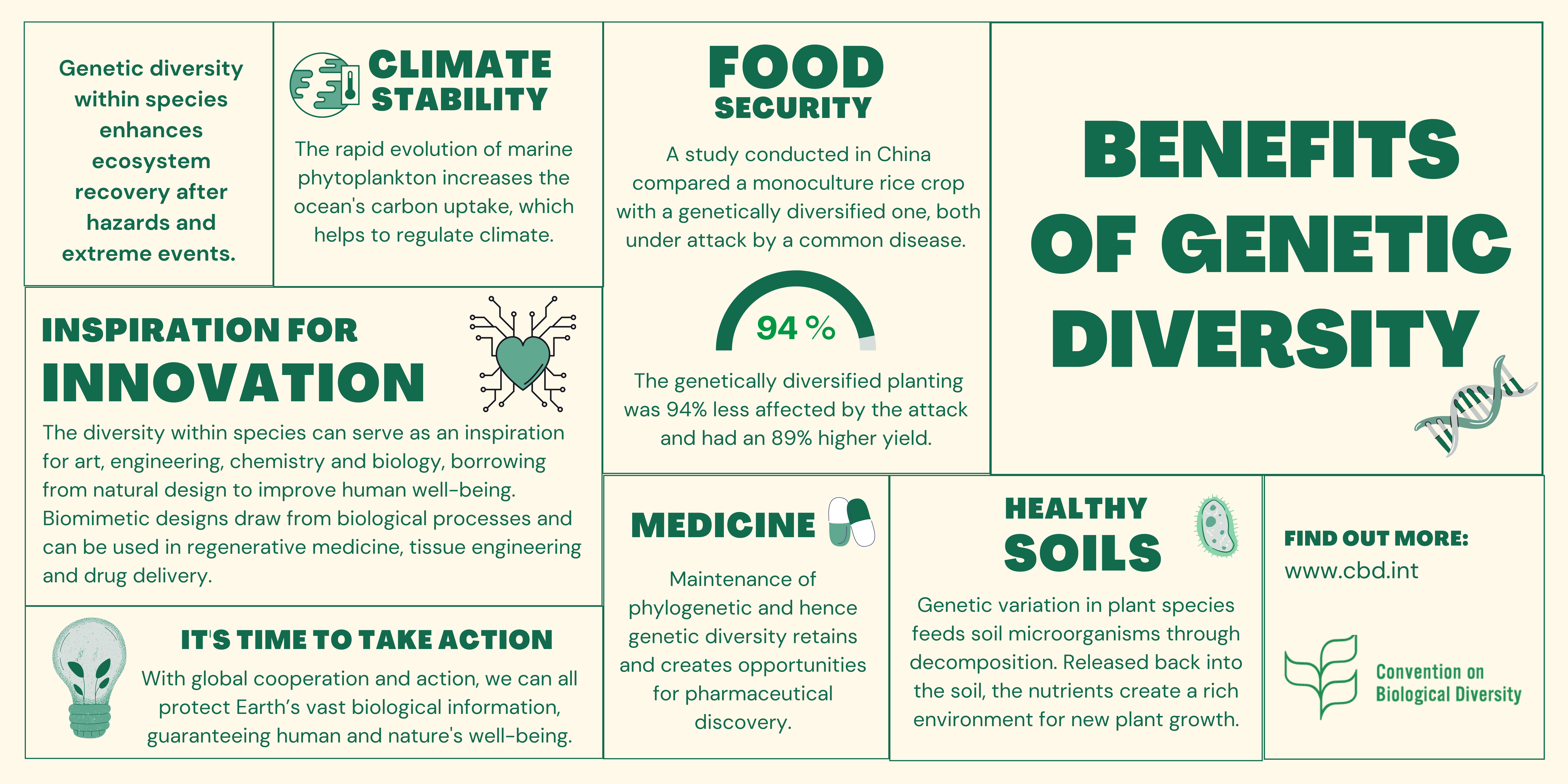
Genetic Diversity: The Hidden Secret of Life
Often when we think of biological diversity, what first comes to mind are all the different species on Earth. But that’s only part of the story. Biodiversity is also the incredible variety within a species.
Trillions of characteristics are hidden in organisms’ genomes; the result of all the biological information from thousands of ancestors and millions of years of evolution. All the biological data and variation that makes life on our planet work is encoded in DNA. This is known as genetic diversity.
It strengthens the ability of species and populations to resist diseases, pests, changes in climate and other stresses. Gene variations underpin their capacity to evolve and their flexibility to adapt.

Food and Genetic Diversity
One way to better understand the importance of genetic diversity is to consider what happens when it is severely reduced. The FAO has warned that declining genetic diversity in food and agriculture makes food crops and livestock more susceptible to disease and farmers more vulnerable to crop failure. This in turn puts global food security at risk.
Unsustainable agricultural practices can contribute to genetic uniformity in the agriculture sector. Earth’s genetic library is also under threat from habitat loss and habitat fragmentation, which prevent different populations of the same species from mingling.
Safeguarding Genetic Diversity
At the global, national and local levels, steps are being taken to safeguard this critical natural resource. Parties to the Convention on Biological Diversity (CBD) are developing goals, targets and indicators for genetic diversity for inclusion in the post-2020 global biodiversity framework, to be adopted at the UN Biodiversity Conference (COP 15) in October 2021.
Other international instruments addressing genetic diversity include the International Treaty on Plant Genetic Resources for Food and Agriculture and the Sustainable Development Goals. Gene banks that save millions of seeds from around the world, botanical gardens that showcase dazzling plant collections and pastoralists who raise traditional livestock breeds all contribute to preserving biological information for the future.
With the changing climate, disease epidemics and other environmental risks factors we face, genetic diversity could be the difference between survival and extinction for many species – including, eventually, our own.

More information:
Updated zero draft of the post-2020 global biodiversity framework
Global Biodiversity Outlook 5
FAO: State of biodiversity for food and agriculture
Phys.org: Conserving and monitoring genetic diversity will benefit nature and society